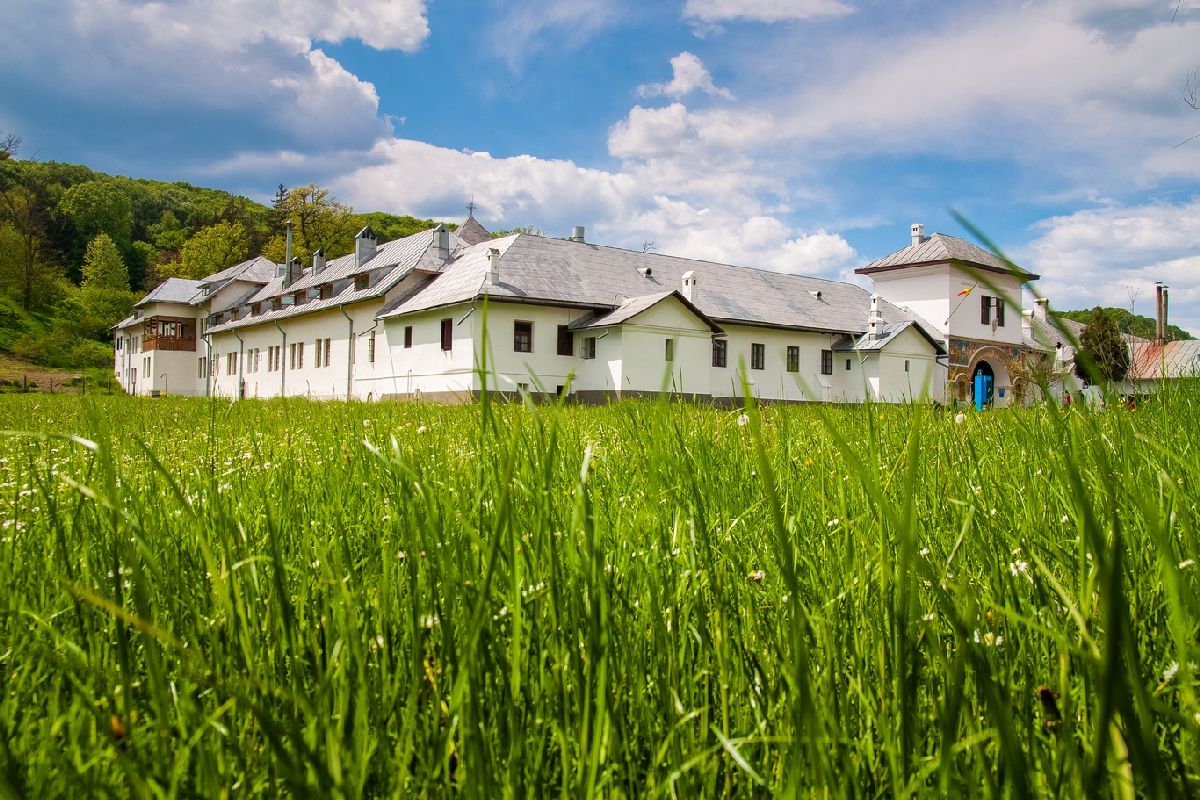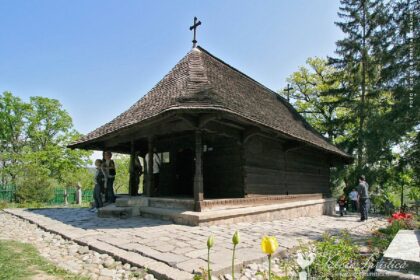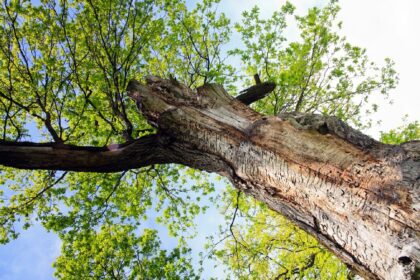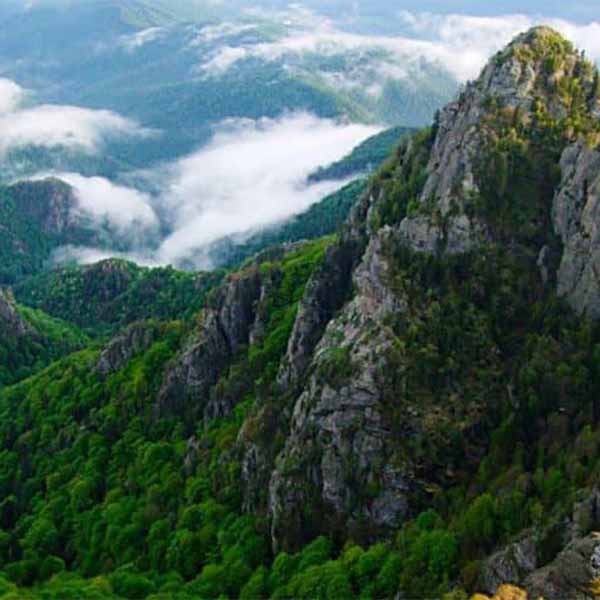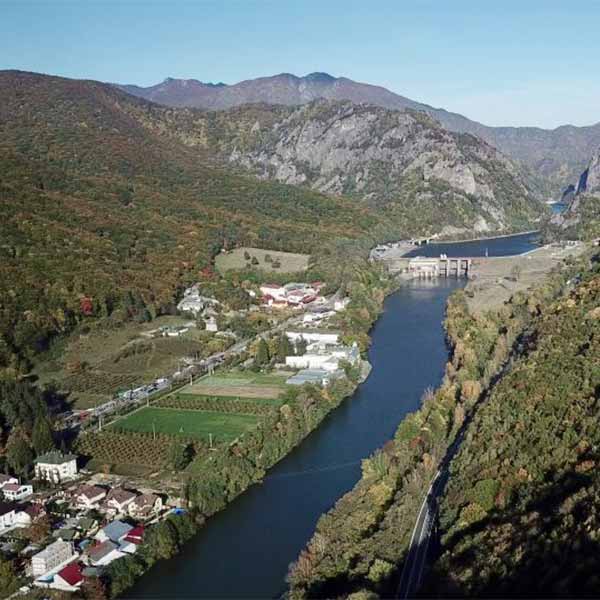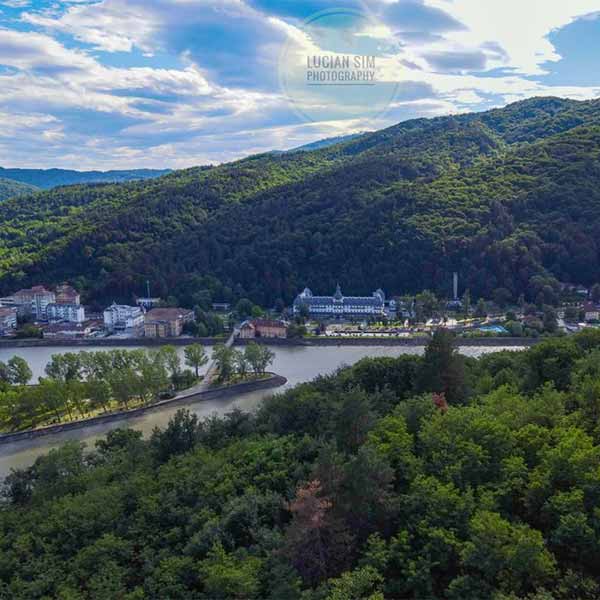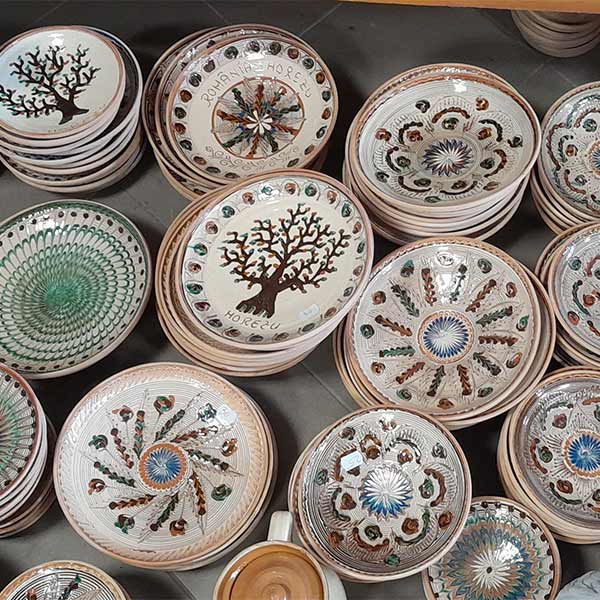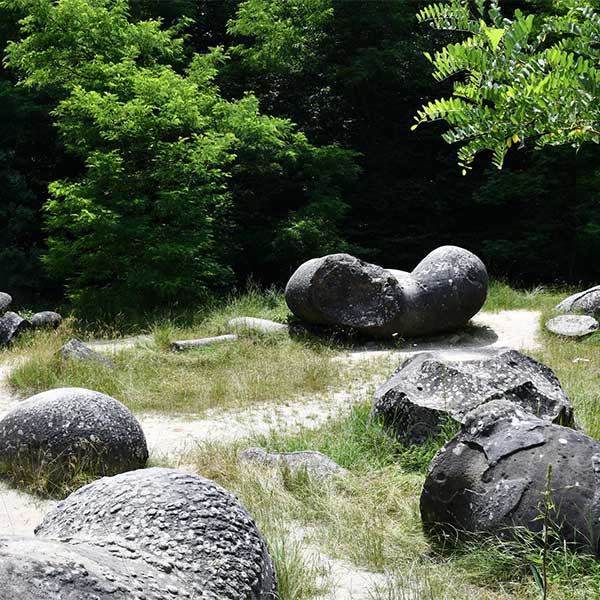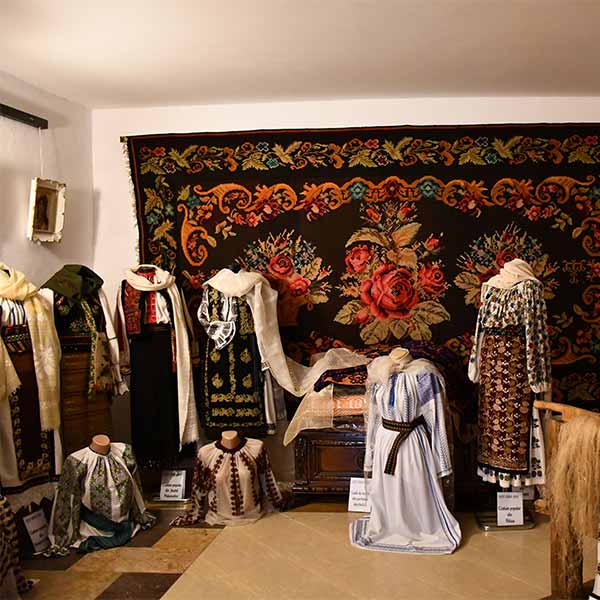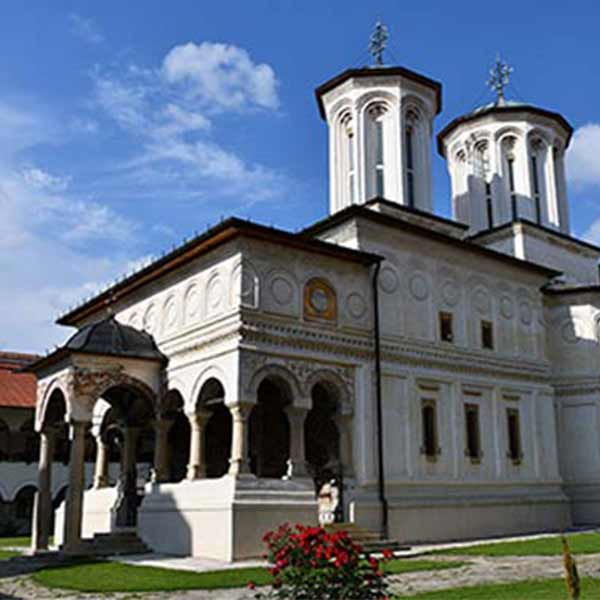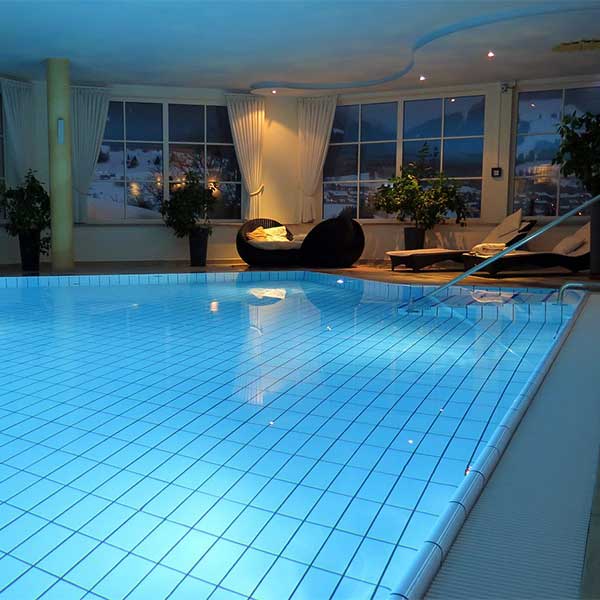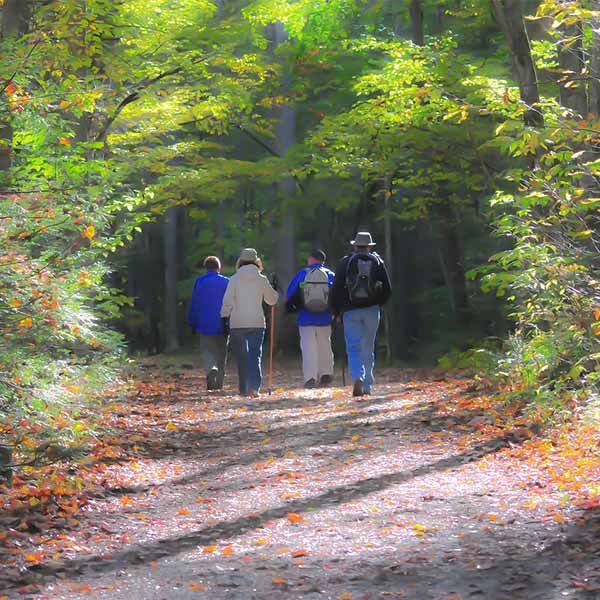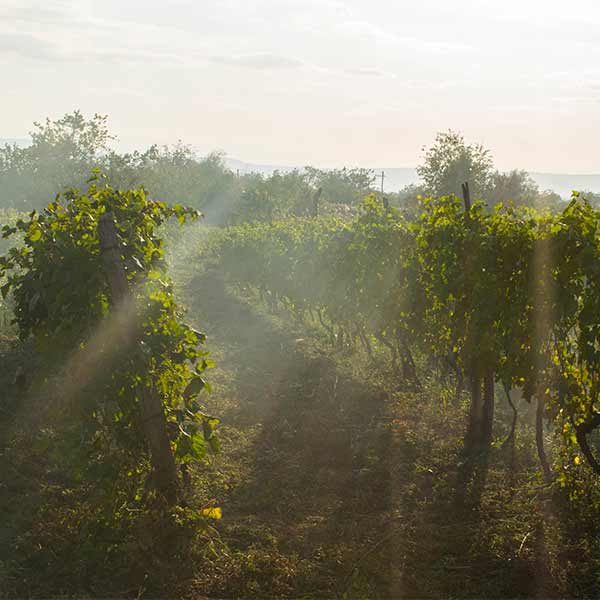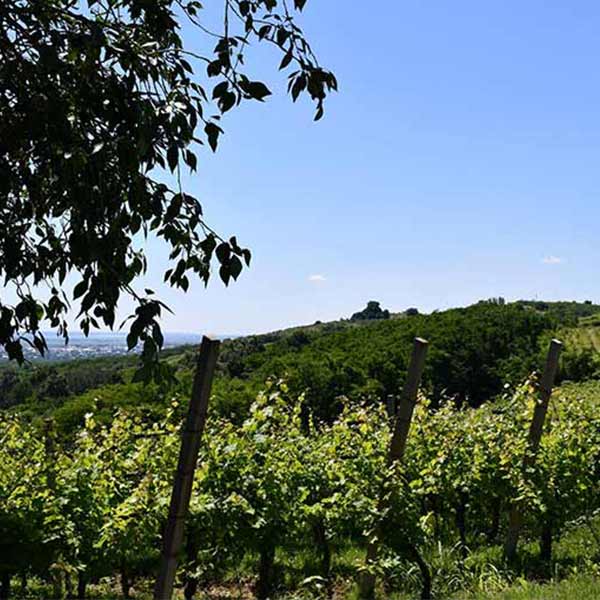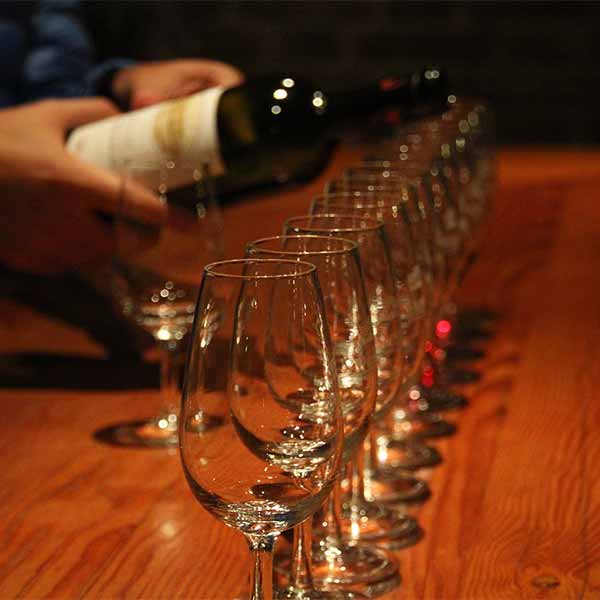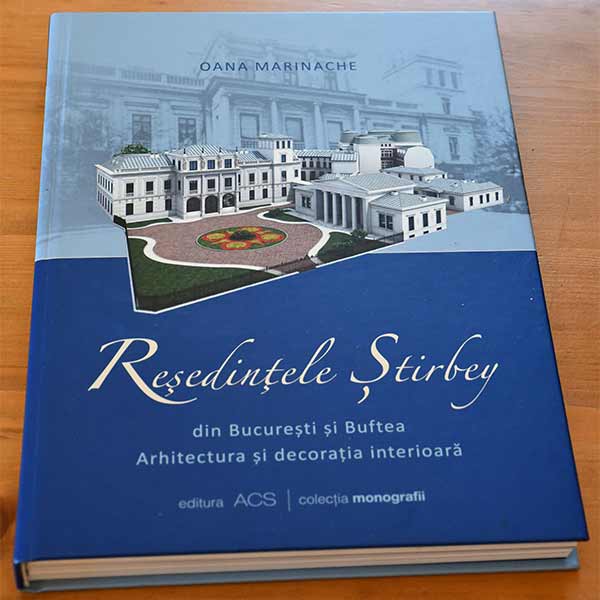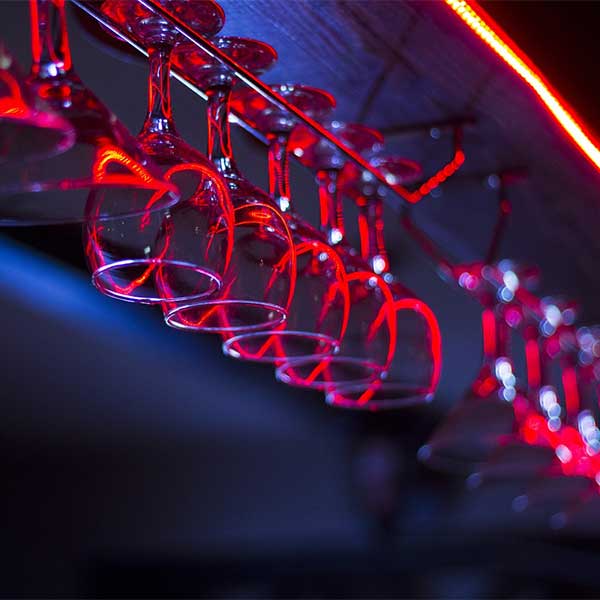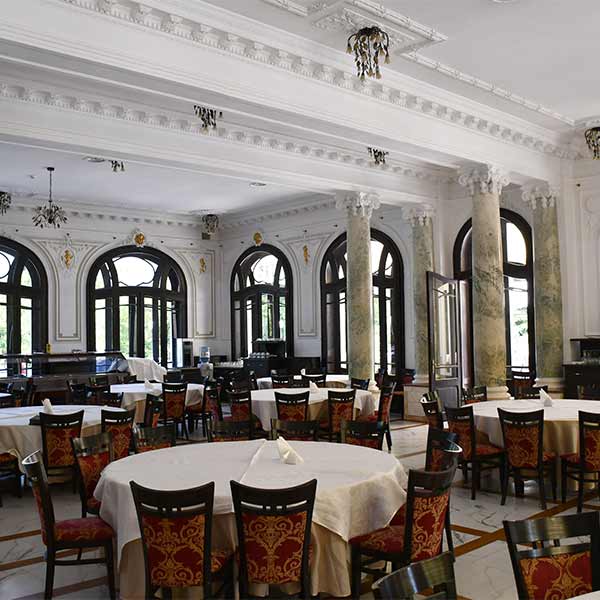
Monastery “From a Wood”
Monastery “From a Wood”
It is situated about 25 km south of Ramnicu Valcea and 12 km north of Babeni, on the Otasaului valley, in the commune of Francesti. According to an old local tradition, it was founded in the first decades of the 16th century, by building a single oak tree in this place. It was built in honour of the Icon of the Mother of God, an icon that is still preserved today in the stone church of the monastery. Based on this tradition, the monastic settlement here bears the name of “Dintr-un Lemn”.
The earliest testimony about the monastery was written down by deacon Paul of Aleppo, who accompanied Patriarch Macarius of Antioch on his travels through the Romanian lands between 1653-1658. He claimed that a monk had found an icon of the Virgin Mary in the hollow of a secular oak tree. At that moment he would have heard a voice that would have urged him to build a monastery from the trunk of that tree.
The Metropolitan of Ungrovlachia, Neophytos the Cretan, investigating the monastery on July 29, 1745 wrote: “A shepherd named Radu, in the time of Alexander Voda (1568-1577), dreamt of the Icon of the Mother of God mentioned by Paul of Aleppo and, cutting down the oak tree in which the icon was found, made from its wood a little church, called for this reason From a Wood”.
In 1842, the poet Grigore Alexandrescu said the same thing. The existence of the secular oaks, as well as the icon, are today undeniable proofs for the truths enshrined in the legend.
Built on the very site of the icon-bearing oak, in all probability in the mid-16th century, the wooden church is made of thick, dovetailed bars. It is rectangular in shape, with an uncrossed altar apse, with an overall length of 13 m, a width of 5.50 m and a height of about 4 m. It is surrounded on the outside by a twisted bracket, carved into the thickness of the wood, with an open porch without a spire.
The iconostasis, carved in linden wood in 1814, is a true work of art like many of the wooden icons that adorn the church inside.
The icon of the Mother of God, which is linked to the existence of this holy monastic settlement, is kept with great veneration in the large church. It has impressive dimensions, being 1.50 m high and 1.10 m wide. In 1929, Andrei Grabar of the University of Strasbourg visited the monastery and, studying the icon, identified it as having been painted in the 4th century at the Theothokos monastery in Greece, after a model said to have belonged to the Apostle Luke, who first painted the Virgin Mary. According to tradition, there are still three copies of the painting in the world.
Professor I.D. Stefanescu states that the icon was painted only in the second half of the 16th century. According to A.M. Muzicescu, the icon would have been worked before 1453, in Byzantium or on Mount Athos, using an older model. The latter hypothesis is also the most plausible, but how the icon reached us remains unknown.
The beginnings of the Wooden Monastery are linked, as we have seen, to some traditions or legends that undoubtedly preserve some truth. The first document in which the name of the monastic settlement here appears is dated 20 April 1635.
In another testimony written on 27 November 1640, Matthew Basarab says that he built the monastery “de isnoava de’ntemei”. He includes it among the monasteries he founded.
The inscription of the wall church, above the main entrance, dating from 1715, written at the behest of Stefan Cantacuzino (1714-1716), confirms what is found in the document of 1640, namely that the wall church was built by Matthew Basarab. In fact, the monastery’s pomelnic, written by Dionisie, Ecclesiastic of the Metropolitanate of Bucharest in 1804, after the one of 1715, on tab number 6, attests that Matei Basarab was the founder.
Also with Matthew Basarab begins the 1845 homily written by Gheorghe Gherontie de la Hurezi, original document in the collection of the monastery. However, Paul of Aleppo, who visits the monastery, as we have noted above, during the years 1653-1658, so about 20 years after the founding of the stone church, adds to what is recorded by local tradition and documents written until then that the monastery is the foundation of a great spatar and nobleman contemporary with Matthew Basarab.
To those confirmed by Paul Alep and on the basis of more recent documents, Radu Creteanu states that “the author of the second stage of construction of the Dintr-un Lemn monastery, of the complex of stone buildings of which the church in the wall is part, can be none other than Preda Brancoveanu himself, former great spatar and great culcer, great vornic, future ban”.
The fact that some documents attest Matei Basarab as the founder of the stone church, and others Preda Brancoveanu, should not confuse the researcher. It is possible that both the ruler and his relative, the great boyar Preda Brancoveanu, participated in this construction. This fact is confirmed by the painting of the founders in the pronaos of the stone church.
Today’s church shows in general lines the architecture of Matei Basarab. From an architectural point of view the church wall is in triconical plan, with octagonal altar, and the pronaos ends with a porch on pillars. Besides the icon of the Holy Virgin, which is linked to the past of the monastery, there are the two polychanders from Serban Cantacuzino and Mrs. Marica Brancoveanu, the three large imperial icons, as well as 36 smaller icons painted in 1833-1840 by Gheorghe Gherontie from Hurezi. In 1715 Stefan Cantacuzino completely restored the monastery bell tower, located at the entrance to the main enclosure and the manor house.
After the restoration of 1938-1940, carried out by the Ministry of Air and Navy, this monastic ensemble became a symbolic shrine of worship for airmen and sailors.
Thanks Vâlcea Turistica for permission to use the photos and information.
